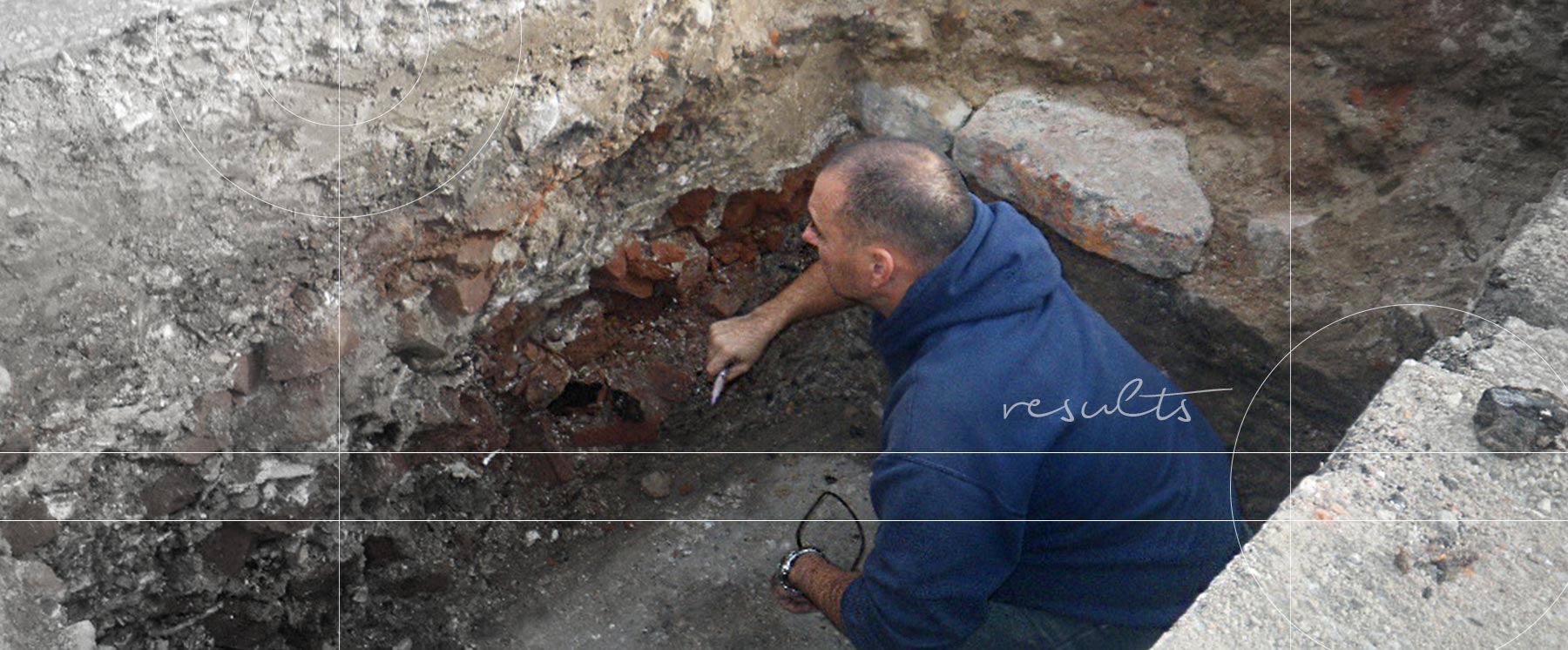
High degree of success to locate buried pits & historic stone foundations
Resistivity is one of the best pieces of equipment to locate areas of varying compaction. It has a high degree of success locating buried pits such as graves and historic stone foundations.
Soil and rocks in the ground carry a very weak electrical current. Rainfall, containing dissolved carbon dioxide and carbonic acid from the atmosphere leaches into the soil where it mixes with salts from humic acids producing conducting electrolytes. These break down into positive and negative ions, which serve as the conductors of electricity. When an electrical charge is introduced into this environment between two electrodes, the solution will separate into positive and negative ions. These positive and negative ions will flow to the negative and positive electrode therefore creating an electrical current. The ratio of the applied voltage to the amount of current received is known as the resistance between the electrodes. This ratio varies depending on the moisture content and the amount of salts and acid present in the soil.
Basically, the instrument used to measure resistivity is set up to divide the voltage o potential difference, by the current that is introduced into the ground. This gives the resistance value.
There are two types of resistance anomalies, high or positive and anomalies, and low or negative anomalies. High resistance is caused when objects, such as rocks, are in the path of the current introduced into the ground. The current is forced around the object finding longer and easier ways back to the electrode array. This reduces the currents voltage. When the voltage returns to the electrodes and is divided by the current, the resistance is increased. The exact opposite is true for a negative resistance anomaly. A negative resistance anomaly such as a pit provides an easy path for the current sent into the ground. The pit pulls the current in and the voltage returns to the electrode array much faster and subsequently stronger. When the voltage is divided by the current, the resistance is decreased.
The Resistivity meter has been used in British Archaeology for over 50 years now. It is a regular tool in the standard archaeological assessment of deposits throughout Britian. It is designed to highlight hard and soft buried objects. In Ontario archaeology with have manipulated our surveys to highlight hard and soft objects as well. It performs nicely when looking for historic foundations. There are a number of conditions that must be right before this survey can be undertaken, but this type of survey has always been consistent in providing clear, accurate, and easy to interpret results.
